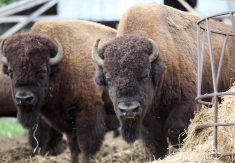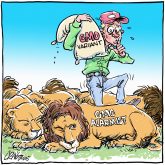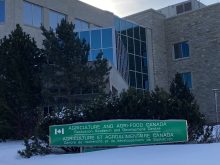Many Albertans are applauding premier Alison Redford’s recent decision to shelve a controversial land sale in southern Alberta.
Had it happened, 16,000 acres of public land near the confluence of the Bow and Oldman rivers would have been converted from native grasslands to potato fields. The decision suggests a new broom has swept into town.
However, there remain several unresolved issues in the euphoria over a rare conservation win.
Most alarming is the arbitrary, secretive nature of such deals that can liquidate a public asset with little government accountability and worse, leave no recourse available for concerned Albertans, other than writing a letter.
Read Also

High prices see cow-calf producers rushing to incorporate
Farm accountants are reporting a steady stream of cow-calf producers rushing to get their operations incorporated ahead of selling their calves this fall.
This scheme, referred to by many as “potatogate,” would have seen a loss of native grasslands equivalent in area to about half the footprint of Lethbridge or Medicine Hat, and roughly a third of the Syncrude tar sands mine near Fort McMurray.
With no new guidelines in place, no adherence to the land-use framework and such power vested with one minister, this could happen again.
A new process for land sale decisions is urgently required to move away from the bright, mesmerizing lights of economic development and lobbying efforts, one that would fairly and equitably balance all values.
In a more enlightened land, the scale of potatogate would require the soberness of a formal environmental assessment.
What underlies these economic development schemes is the enduring myth that prairie grasslands aren’t working hard enough for us.
In reality, the economic and environmental values of native grasslands are consistently overlooked, undervalued and ignored because of a short-term business mindset.
Grasslands are marvelously adapted given their 10,000 year evolution under arid conditions. No potato patch can rival their drought tolerance, nutrient recycling, resilience, moisture conservation and ability to support wildlife. Grasslands also capture and store appreciable amounts of carbon.
As the climate change bad boy, Alberta needs every conceivable carbon storage mechanism available to demonstrate our commitment nationally and internationally to a real problem.
The grasslands that would have been plowed had this deal gone ahead generate economic value with livestock grazing. Grazing of native grasslands is as close as we have come to a truly sustainable form of agriculture.
To plow them up for a crop that requires artificial inputs, immense fossil fuel use and obscene amounts of water, and is susceptible to any number of pathogens and diseases, means we haven’t yet learned the lesson of living in arid country.
Even the Alberta government, with pretensions of perpetuity, can’t make new native grassland. It’s a tough assignment to recreate a prairie where native grasses-built soil, drought tested plants and millions of bison grazed over a span of thousands of years.
We need to recognize grasslands as living organisms, demanding care and stewardship. Instead we have treated them as a warehouse of commodities to be mined, raided and pilfered. That warehouse, provincially, is already more than three-quarters emptied.
It is why the grasslands have a disproportionately high percentage of imperiled wildlife. The lands coveted for cultivation harbour several of those species and they would have been lost, permanently and as irrevocably as evidenced elsewhere where grasslands have been plowed.
One must give much credit to Redford for this decision. However, there is a caveat. Without systemic changes, the future could see yet another attempt to orchestrate the sale over objections of thousands of Albertans who have expressed their opinion that the land should stay unplowed and public.
Fitch is a professional biologist, a retired fish and wildlife biologist and an adjunct professor with the University of Calgary.














